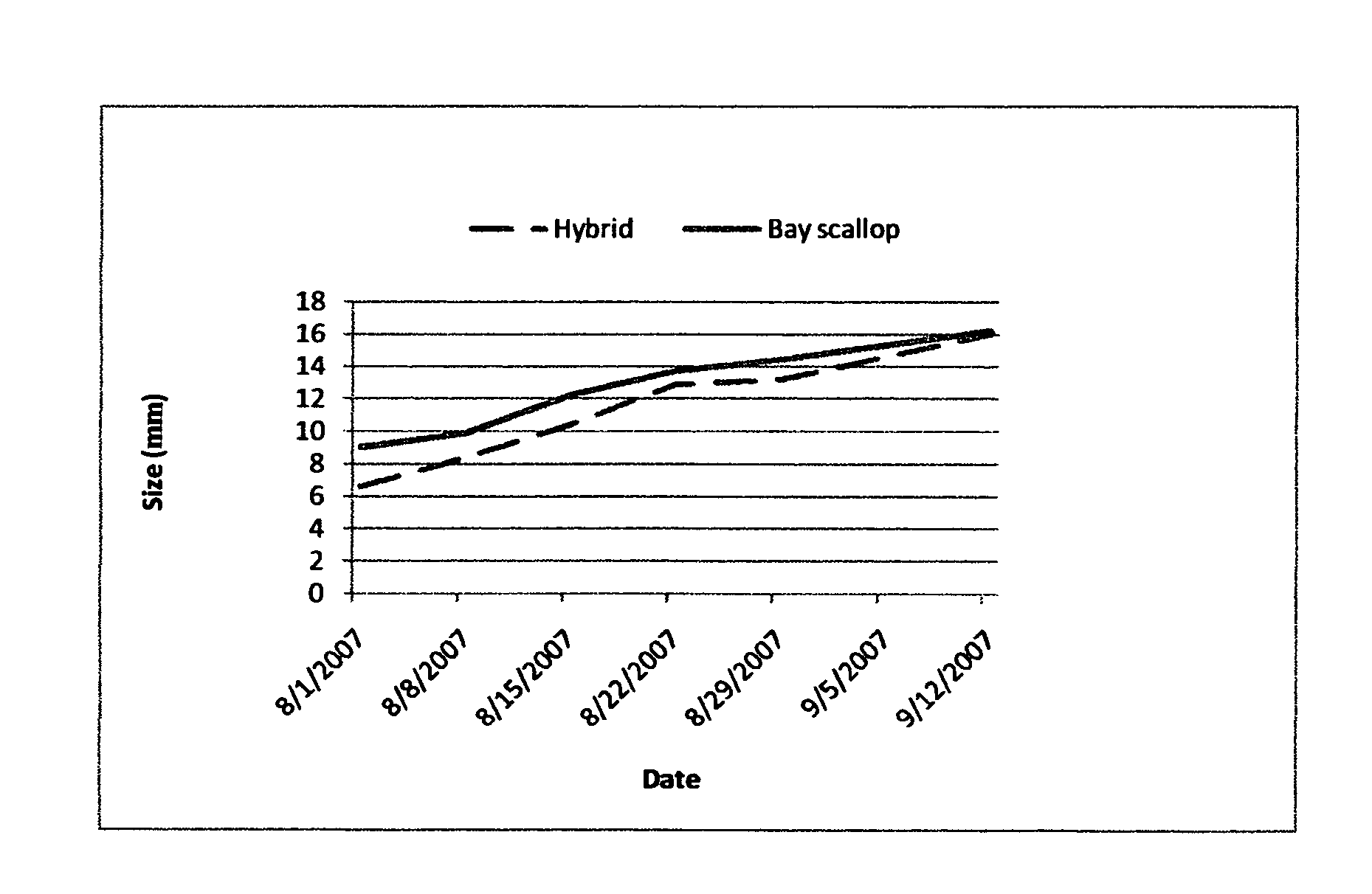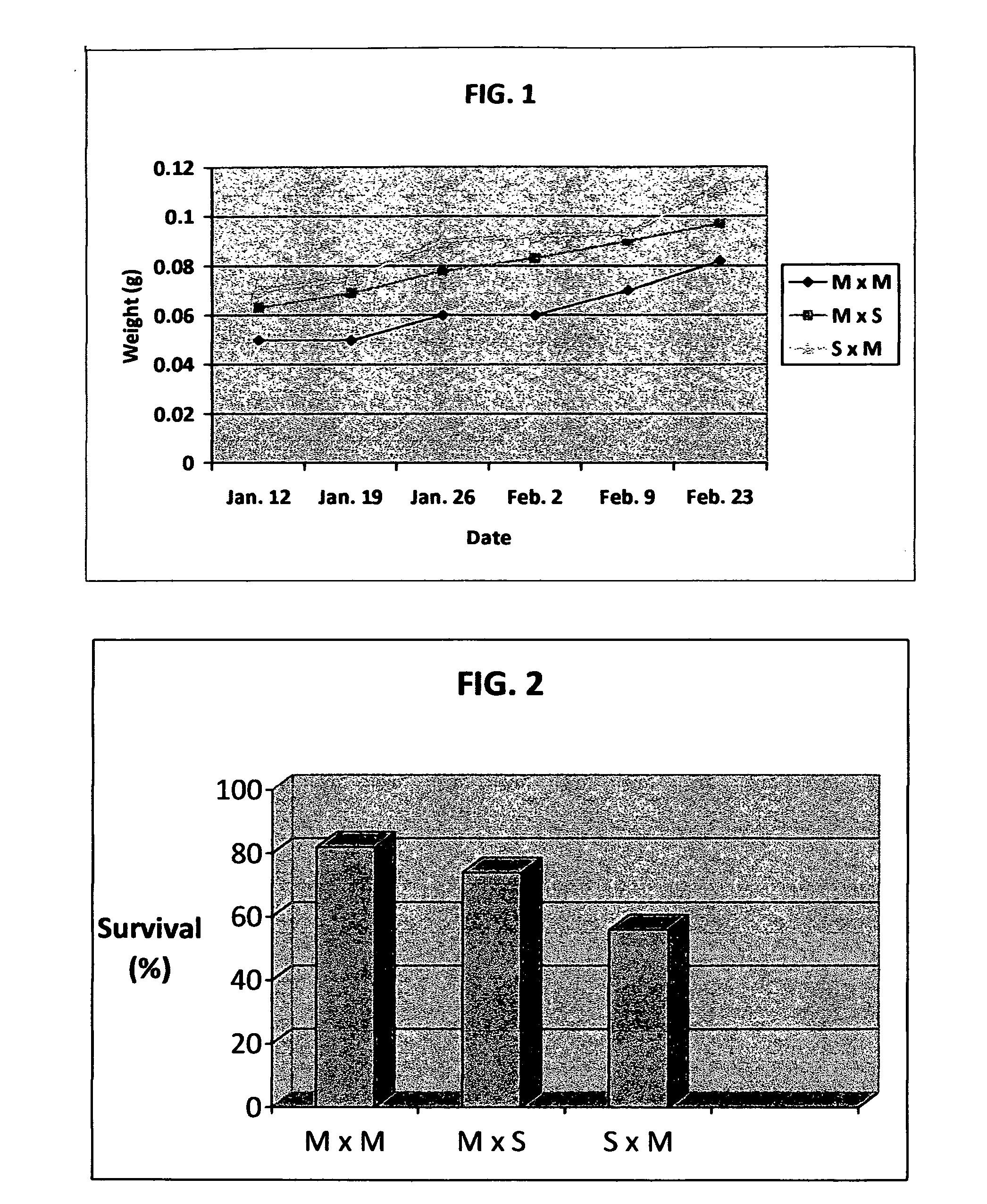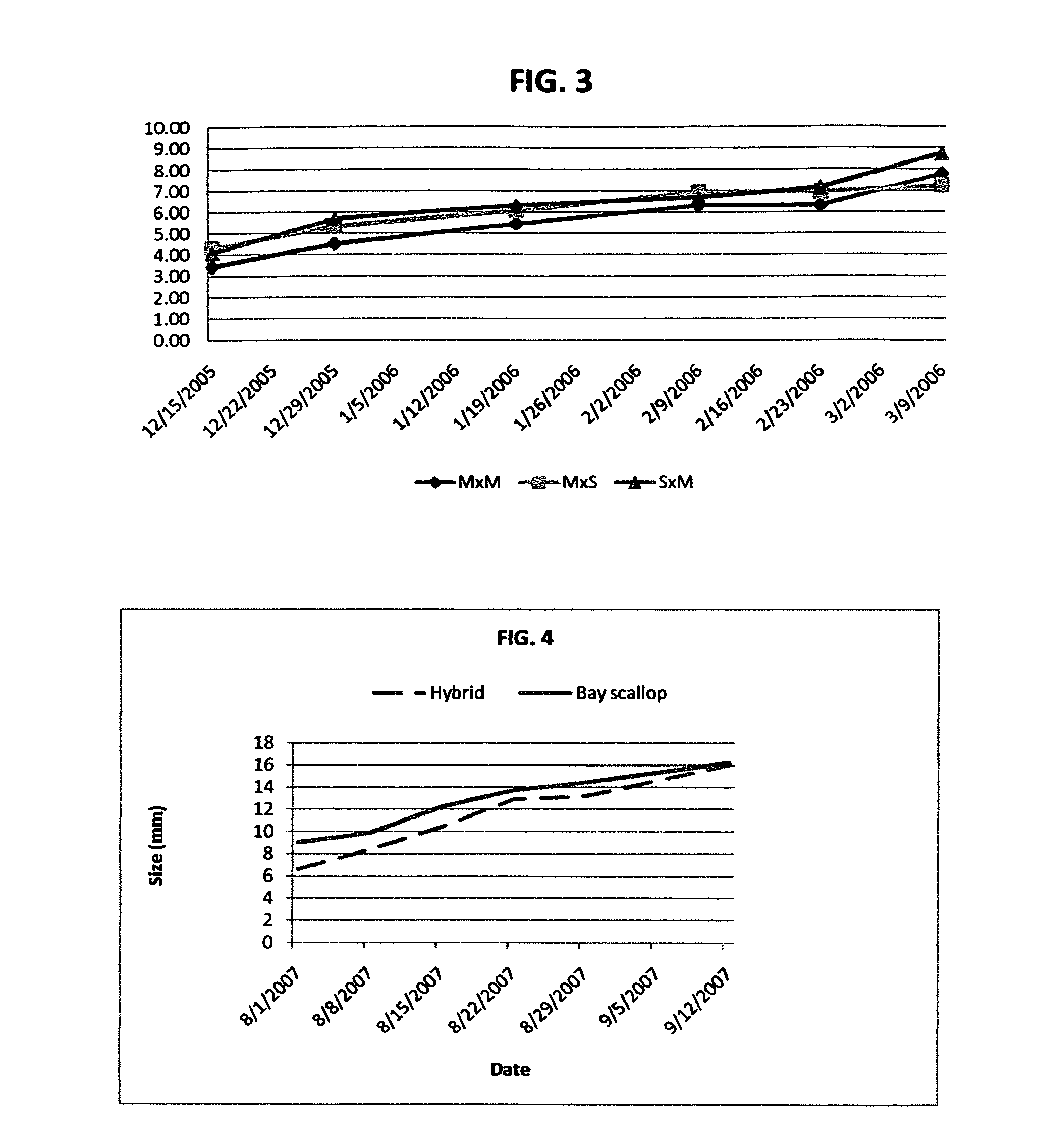Intergeneric bivalve shellfish hybrid and method for producing
a technology of intergeneric bivalve and hybrid shellfish, which is applied in the field of genetically stable, new, intergeneric bivalve shellfish hybrids, can solve the problems of being more susceptible to infection by opportunistic or indigenous peoples, and achieve the effect of less restrictive feeding requirements and improved appearance or tas
- Summary
- Abstract
- Description
- Claims
- Application Information
AI Technical Summary
Benefits of technology
Problems solved by technology
Method used
Image
Examples
example 1
Intergeneric Hybridization of Clams
[0044]The Atlantic surf clam (Spisula solidissim) and coot clam (Mulinia lateralis) and were conditioned at normal maturation temperatures of approximately 20° C. and 12° C., respectively, for several weeks prior to fertilization. Spawning was induced by rapid increases in water temperature of about 5° C. to 10° C. above maturation temperature. The gametes from individual clams were collected, filtered, rinsed, and mixed in containers with sterile seawater to produce fertilized eggs. Eggs of Mulinia lateralis were mixed with sperm from Spisula solidissim to produce the “Mulinia×Spisula” hybrid; eggs of Spisula solidissim were mixed with sperm from Mulinia lateralis to produce “Spisula×Mulinia”; and Mulinia lateralis eggs and sperm were mixed and used as the control “Mulinia.” Replicates were made of each cross. Fertilization rates were above 80%.
[0045]Larvae of coot clams (Mulinia) and both hybrids (Mulinia×Spisula and Spisula×Mulinia) metamorphose...
example 2
Intergeneric Hybridization of Scallops
[0048]The sea scallop (Placopecten magellanicus) and bay scallop (Argopecten irradians) were conditioned at normal maturation temperatures for several weeks prior to fertilization. Spawning was induced by rapid increases in water temperature of about 5° C. to 10° C. above maturation temperature. The gametes from individual scallops were collected, filtered, rinsed, and mixed in containers with sterile seawater to produce fertilized eggs. Approximately 20 million eggs from Placopecten magellanicus were mixed with sperm from Argopecten irradians to produce the “Placopecten×Argopecten” hybrid. Approximately 3-4 million larvae appeared to develop normally at their “maternal” cool water temperature of about 14° C. to 15° C., however none survived beyond 30 days.
[0049]Eggs of Argopecten irradians were mixed with sperm from Placopecten magellanicus to produce the “Argopecten×Placopecten” hybrid; and Argopecten irradians eggs and sperm were mixed and us...
PUM
| Property | Measurement | Unit |
|---|---|---|
| temperatures | aaaaa | aaaaa |
| temperatures | aaaaa | aaaaa |
| diameter | aaaaa | aaaaa |
Abstract
Description
Claims
Application Information
 Login to View More
Login to View More - R&D
- Intellectual Property
- Life Sciences
- Materials
- Tech Scout
- Unparalleled Data Quality
- Higher Quality Content
- 60% Fewer Hallucinations
Browse by: Latest US Patents, China's latest patents, Technical Efficacy Thesaurus, Application Domain, Technology Topic, Popular Technical Reports.
© 2025 PatSnap. All rights reserved.Legal|Privacy policy|Modern Slavery Act Transparency Statement|Sitemap|About US| Contact US: help@patsnap.com



